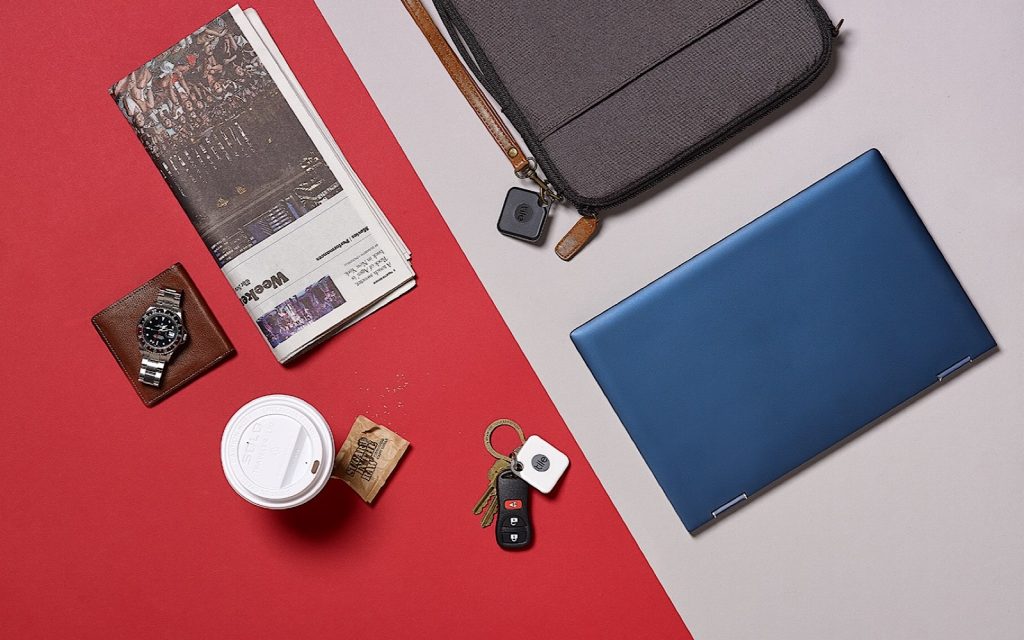Lost something? You can prepare for that ahead of time with a Tile findable Bluetooth tracker, and that’s coming soon to new PCs, too.
Bluetooth tracking has become one of those thins many people rely on, and we likely have Tile to thank.
The concept is fairly simple: attach a small tracking chip to something you don’t want to lose, say a pair of headphones, an umbrella, your wallet, or keys, and when you log into the associated app, the small Bluetooth chip inside the battery-powered Tile talks to the app to say where it is.
Not just that, but everyone else using their app talks to it, provided they’re in the same area. There are no details passed to those other users, just to the system, and the more people that use the app, the more the Tile system knows about what’s being tracked and where it is.
With this information sitting underneath the app and unable to be seen by everyone — only the owner of the Tile can see where their items are — the Tile system can track where you last left your Tiles due to everyone else using their apps to do the same thing.
It’s a rather innocuous process that basically turns each Tile into a small beacon, silently communicating to the Tile system where things are, but only informing the people that need to know. Specifically, that means you, the owner of the Tile-affixed items in question.
If you accidentally leave your backpack with a Tile attached in a park, Tile can essentially tell you once other Tile users have been in the same area. It happens in the background without them knowing.
The Tile concept has grown in number over the past few years in such a way whereby you can get Tile trackers for all sorts of things, as the technology needs are fairly small. The device is often a tiny tracker with a small battery inside that lasts several months to a year, and can be attached to key rings, affixed to fabric surfaces, or even placed in wallets. Tile has even said in the past that its tracker has been used to find a turtle.
And it’s a technology that could soon see inclusion in new laptops, too, as Tile and Intel announce a partnership to bring the Tile technology to new laptops, and have it work even while the laptop is in sleep mode.
It’s not the first time Tile has seen its hardware join up with other companies, either. We’ve seen Tile hardware in headphones from Skullcandy and Sennheiser, and Tile has reportedly worked with other chip makers as well, including Qualcomm.
However the collaboration with Intel means it’s very possible that the next laptop you buy could include that neat tracking technology, provided you buy it later this year or from early next. According to Tile, the solution from Intel is expected to be available later this year, and would allow PC makers using Intel hardware to make them Tile ready.
“This collaboration with Tile is an exciting addition to our world-class wireless connectivity solutions,” said Eric McLaughlin, Vice President for Intel’s Compute Client Group and General Manager for Intel’s Wireless Solutions Group.
“We are always looking for ways to further enhance PC platform experiences and in this case, we enable new capabilities including enhanced security by simplifying device tracking and recovery for both consumer and commercial PCs,” he said.
You can already kind of use Tile’s hardware to track a laptop, simply by affixing one of the Tile stickers to the front or back, or even to a case. However this is the sort of collaboration that means you won’t have to, and it should just arrive natively in the computer without needing to make a mark on your fancy new laptop purchase.
As for when Tile’s hardware looks to arrive in a new laptop, it sounds as though this is the sort of thing we’d hear upon announcement of a new Intel chip variant, so at the earliest, July, though it could be even later. We’ll let you know when we hear more.






